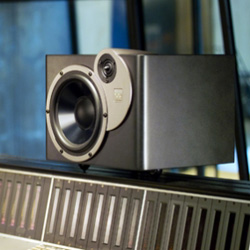Most engineers know that raw speaker transducers sound different from one another, but few know exactly why.
Each speaker has a wide variety of parameters, and most aren’t that obvious unless you’re a transducer engineer.
The one that is obvious is the speaker magnet.
Speaker magnets come in all sort of different sizes and shapes, but the materials that they’re made of really makes a difference in the way the speaker sounds.
Here’s a brief excerpt from The Ultimate Guitar Tone Handbook which refers to guitar cabinets, but the explanation applies equally to studio monitors as well.
“There are three different types of materials used in speaker magnets, Alnico, Ceramic, and Neodymium, with each material having a distinctly different effect on the tonal characteristics of the speaker.
• Alnico, an alloy of aluminum, nickel and cobalt, is the magnetic material used in the original speakers in all the vintage amps. It produces a classic tone that’s warmer and sweeter at lower volumes that many players feel reacts faster to the touch.
Alnico was used for decades because of its strong magnetic field, but once the alloy became a bit pricey, many manufacturers opted for speakers with the less expensive ceramic magnets.
• Ceramic magnets were developed as an inexpensive alternative to Alnico and have the advantage of being more versatile with a wider range of tones. Speakers with ceramic magnets tend to weigh more, but generally handle more power and sound better at high volumes.
• Neodymium is the latest development in speaker magnet material. It’s not as expensive as Alnico but costs a bit more than ceramic magnet speakers.
It has the advantages of both weighing about 50% less than other speakers and having stronger magnetic properties.
Speakers made from neodymium respond to a player’s touch similar to Alnicos and have a well balanced frequency response.”
So the next time you buy a speaker, pay attention to the magnet. It’s influence on the sound is greater than you think.
Bobby Owsinski is an author, producer, music industry veteran and technical consultant who has written numerous books covering all aspects of audio recording. For more information be sure to check out his website and blog.
















